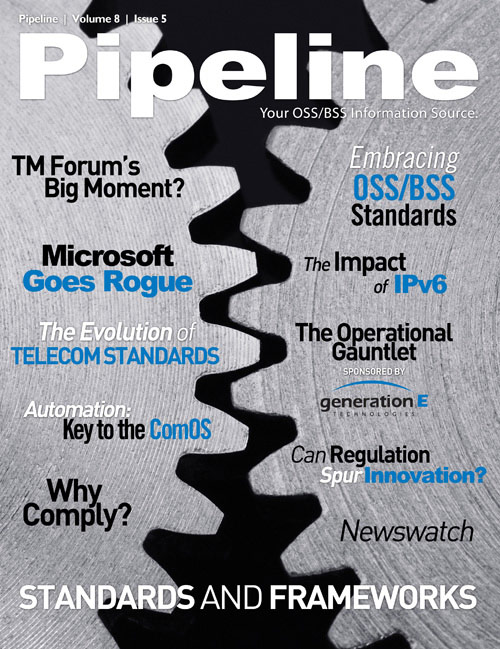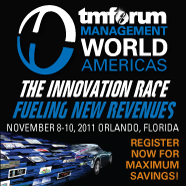Finally, the Integration Framework defines SOA-based interfaces, therefore allowing automation of business processes.
These frameworks have been in the works for some time so they are not, taken in isolation, anything particularly new. However, when you’re attempting to speed time-to-market and lower the time and cost of integration, widespread adoption is all but required. After all, a common language is only valuable if it is widely adopted. Otherwise, it’s just a bunch of gibberish.
So, how widely adopted is Frameworx? “We’ve been trying to address that question ourselves over the past few months by doing a survey of major service providers in terms of their adoption of TM Forum standards,” said Creaner. “We’re not fully done with it, but we do have about 130 responses in from 100 different service providers, so it’s a fairly significant sample size of the largest service providers in the world.”
The results the TMF has gathered so far suggest that 90% of service provider respondents are using Frameworx. “There is a small percentage that is not using Frameworx, but the vast majority is using it in some manner or form.” said Creaner.
Now, there are a few qualifiers to that rather optimistic figure. First of all, this is a rough percentage of an incomplete survey of a relatively small and non-random sample. Second of all, this doesn’t speak the depth of the use of the standards by the companies or the compliance of their suppliers. Each company may be using the Business Process Framework (or, as the old guard knows it, eTOM) or the Information Framework (SID) or the Applications Framework (TAM) in isolation, but we can’t assume that they are using the wider set of standards in a meaningful way.


But Creaner argues that the survey reveals other data that paints a much rosier picture. “I was pleasantly surprised to see about 2/3 of [companies surveyed] are using Frameworx and are mandating it in their procurement activities.” Yet again, Creaner asserts that the percentage mandating solutions across the board is much smaller; this large percentage is mandating Frameworx in specific procurement projects.
However, Creaner asserts that Frameworx certification is beginning to approach critical mass. As more providers look for Frameworx certification in their RFP process (and the Forum provides downloadable templates for providers looking to insert mandatory Frameworx compliance into RFPs), more vendor products become Frameworx certified, and more engineers become trained in the implementation of Frameworx, the whole process will begin to snowball toward ubiquity.
But as a standard, is Frameworx significant? Though it seems, in many ways, like a repackaging and rebranding of Forum stand-bys, leaders insist that Frameworx is more than the sum of its parts.
Creaner compares the standards set to a language. “Every sentence has to have one or more nouns or one or more verbs. Your information framework, these are the nouns. They are the things that everything happens to.” The customers. The network elements. The devices. All of these objects and people fit into the Information Model commonly known as the SID.
The eTOM, or the Process Framework, meanwhile, is made up of the verbs, from provisioning to assurance to billing. “What you need to do is create a library of both your nouns and your verbs that are self-consistent to each other,” said Creaner, “that in some way can be used to create the infinite number of sentences that are out there.”
The grueling work for the Forum comes from the constant growth and sophistication of both the nouns and the verbs in that equation. “You’ve got an ever-changing set of processes and an ever-expanding set of information,” said Creaner, “and you’ve got to continually make sure those fit really tightly together.”









